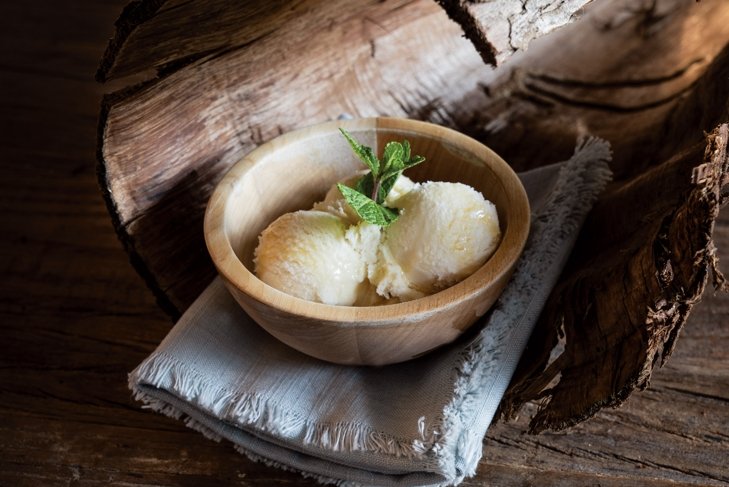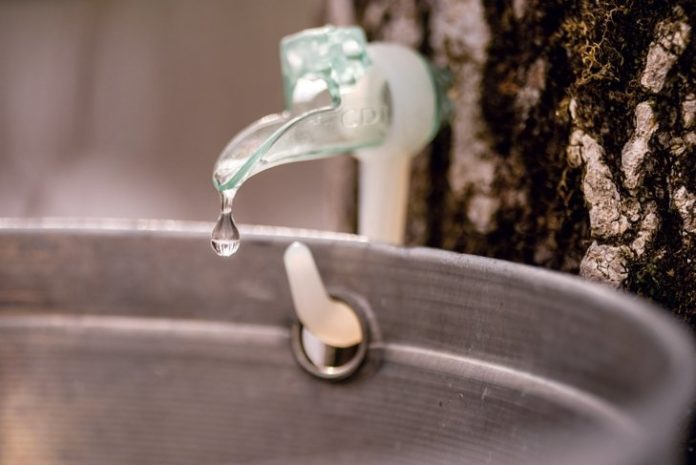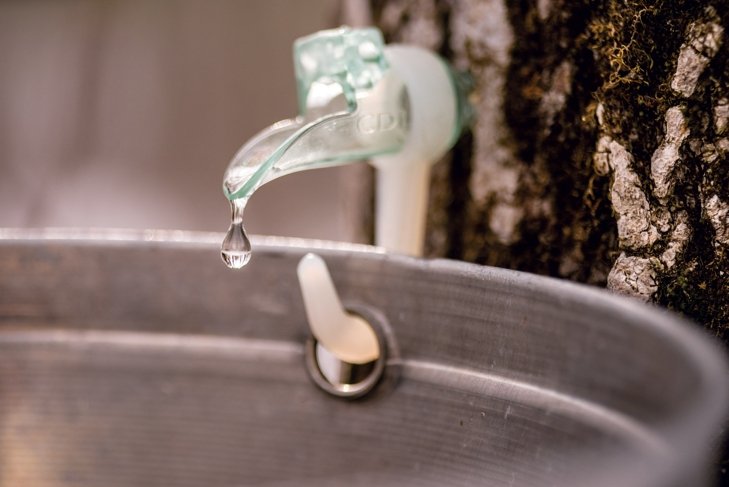
A journey to Canadian maple sugar country and the sugar shack of the Roy/Chevalier family offers alive magazine publisher Ryan Benn and his family a rare glimpse of history, time-honoured traditions, and the tight bonds of family established through 11 generations of maple syrup production.
In March 2018, my family and I had a unique opportunity to visit the 11th generation maple syrup farm of the Roy/Chevalier family. What followed was an experience we’ll never forget, one filled with education, inspiration, and a new-found appreciation of our rich Canadian history.
As long-time friends of François-Pierre (Frank) and his wife Elisabeth, we were welcomed at the sugar shack with open arms, and came to know the rest of their family well over the course of our visit. As we accompanied them through the maple syrup production process, we learned the importance of each step and the common goal that bound this family together.
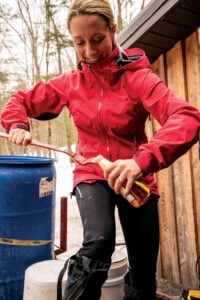 Maple syrup is a 100 percent natural product and is divided into two grades and four colour classes. Light transmission is the best-known way for classification and is measured using a spectrophotometer. Enjoyment is a matter of personal taste and preference.
Maple syrup is a 100 percent natural product and is divided into two grades and four colour classes. Light transmission is the best-known way for classification and is measured using a spectrophotometer. Enjoyment is a matter of personal taste and preference.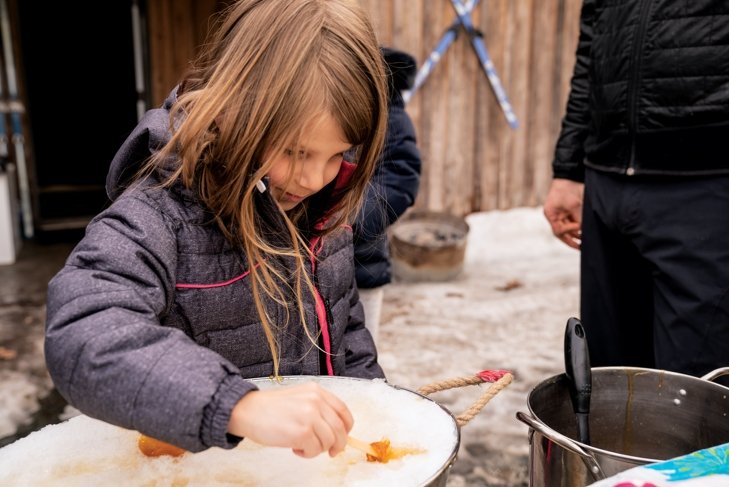 Maple syrup taffy candy is a simple and popular treat in Quebec. To make it correctly, maple syrup must be boiled in a pot to between 235 F/113 C and 238 F/114 C (measured by a candy thermometer), at which point it’s the perfect consistency and will harden once rolled in snow. Enjoy!
Maple syrup taffy candy is a simple and popular treat in Quebec. To make it correctly, maple syrup must be boiled in a pot to between 235 F/113 C and 238 F/114 C (measured by a candy thermometer), at which point it’s the perfect consistency and will harden once rolled in snow. Enjoy!
Canadiana—for real
What might seem like a Canadian cliché becomes a reality here. Snowshoes and wood-burning fires, plaid shirts and old cross-country skis—they all have purpose here. Things we might consider props, these people call tools; something quaint we might see in a ski lodge is a functional part of this family’s traditions.
There is nothing here that isn’t useful. No woodsy décor or aromatherapy, just natural comfort acquired over the years and the earthy, woodsy smells of the air outside, the wood-burning fire, and the sweetness of syrup.
A labour of love
Frank described the magical moments he would spend alone in the night, tasting the syrup as it became denser and the sugar content increased, while he listened to music and immersed himself in the experience. Maple syrup production for this family is a labour of love, a family tradition that serves as a reminder of their unique and unified history.
With only 48 to 80 cans produced each day, the Roy/Chevalier family never sells their syrup. Instead, it is generously offered to the loyal family and friends who have helped in its creation and toiled in its production. A special gift and reminder of their hard work, to be savoured and enjoyed throughout the year.
The following recipes were inspired by our visit to the Roy/Chevalier sugar shack. I hope, through this food, you will get a sense of their family history and the legacy of maple syrup, a natural product whose origins date back to Canada’s Indigenous peoples. A part of our country and a part of our culture. From my kitchen to yours—enjoy the magic of maple!
Recipes
Butternut Squash and Apple Soup with Maple Syrup and Chili Oil
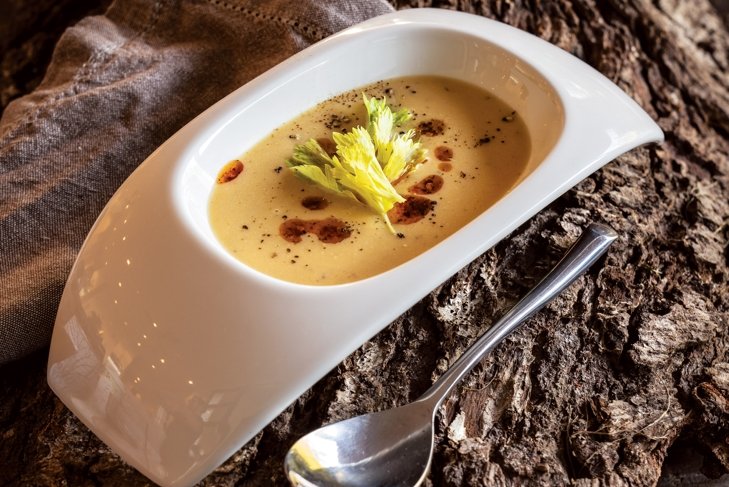
Art form and tradition
Maple syrup production is an art form, passed on from one generation to another. The Chevalier family makes their syrup traditionally, using methods that began with their ancestors.
Taps are inserted one by one into the sugar maple trees to allow the sap, also called sugar water, to drip into individually placed buckets. These then await collection by industrious, hard-working family members who come together each season solely for this purpose.
Nature at her best
The time period for sugar water collection is short, usually occurring during the two to three weeks before Easter. Family members wait patiently for the ideal time, when temperatures drop below freezing at night and rise above freezing during the day.
This is the sweet spot, and as Frank says, the time when “you feel the energy of the earth come rushing up the trees for rebirth.” This synergy is important, or the sap will become harder and sweeter, and will ultimately stop dripping. This is nature at her best.
The sap is collected quickly, and timing is important. In the first days, when the water is fresh, rich, golden syrup is produced. Later in the season, the syrup becomes darker, producing different grades and classes of syrup. Like fine wine, syrups are produced with care, and each batch is as unique as the individual who tastes it.
The magic begins
Back at the sugar shack, the sap is boiled in a three-part process that causes it to gradually thicken and become sweeter. This all takes place in an impressive, third-generation boiler, purchased by Frank Chevalier’s grandfather.
The sap is heated over a wood fire and watched closely until the syrup production is complete. Requiring 40 gallons of sap to produce just one gallon of maple syrup, not one drop of this precious water can be wasted, and each member of the family has a deep respect for this fact.
As I followed and watched the process unfold, I was struck by the devotion and intensity of this family as they worked together as one big team. This was the closest I had ever felt to Canada. These were the stories I grew up with, and here they were, presented in real life, right in front of me.
Maple Syrup and Miso Black Cod with Fried Rice
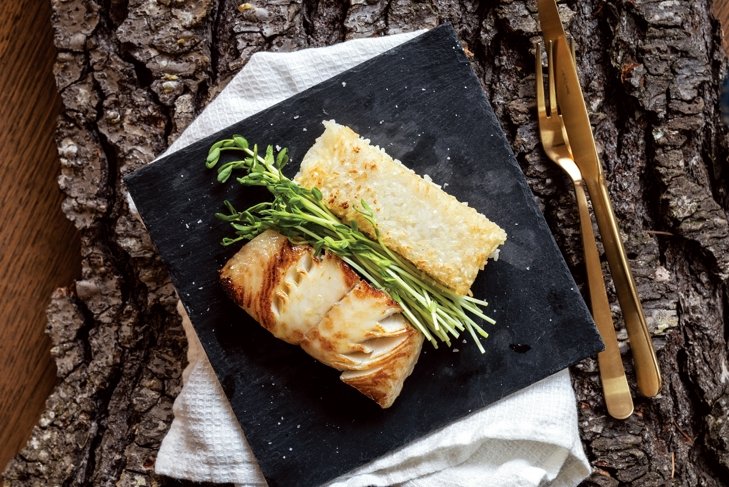
Maple Syrup Ice Cream
